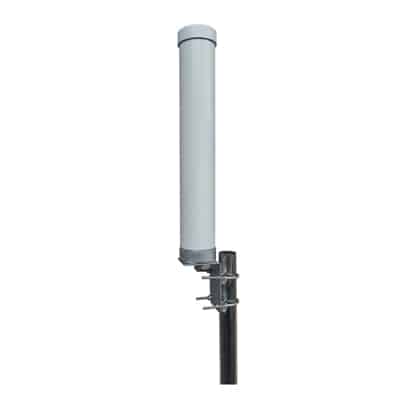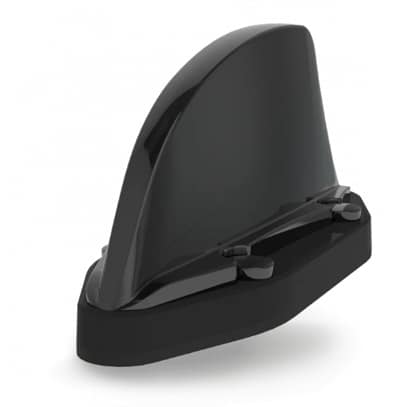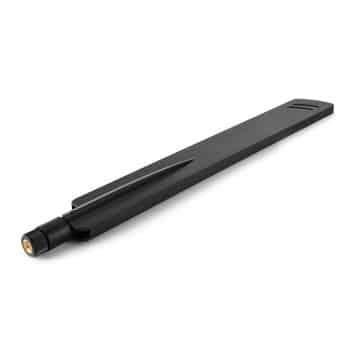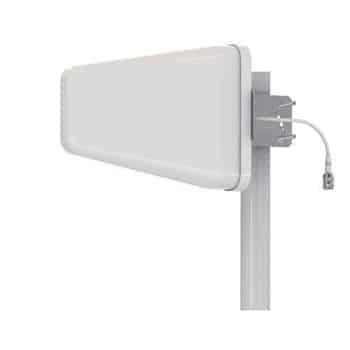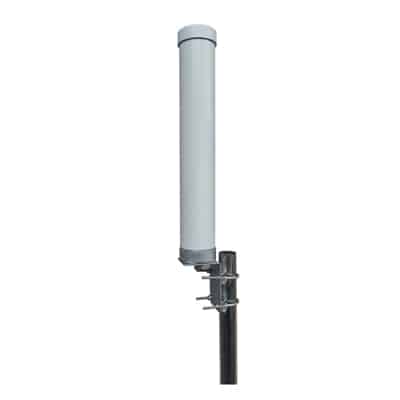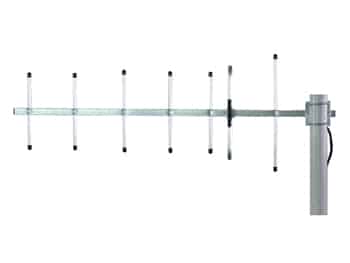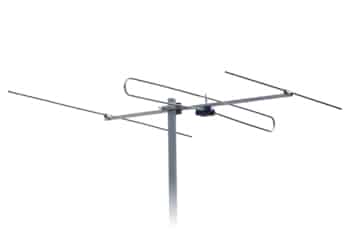
FM-антенны, работающие в диапазоне частот 88 - 108 MHz, способны обеспечить надежную голосовую ко1TP15Туникацию для различных приложений. В этой статье рассматривается принцип работы FM-антенн, выделяются их основные типы, а также их использование в личных, коммерческих и аварийных условиях. Кроме того, в ней затрагиваются факторы, влияющие на выбор антенны, и описывается несколько основных соображений, которые необходимо учитывать пользователю для оптимальной работы FM-антенн и обеспечения целостности сигнала.
Оглавление
ToggleВведение в FM-антенны
FM-антенны - это антенны очень высокой частоты (VHF), специально разработанные для работы в диапазоне частот FM-радиостанций 88-108 MHz. FM-антенны служат в качестве интерфейса для передачи и приема FM-сигналов. Однако антенна не предназначена исключительно для FM-сигналов; она воспринимает любые сигналы, возникающие в ее УКВ-диапазоне. Тем не менее, эффект, связанный с FM-сигналами, заключается в том, что антенны относительно компактны из-за короткой длины волны FM-сигналов.
FM-антенны способствуют эффективной передаче и приему FM-сигналов. Благодаря индивидуальному дизайну и размещению эти антенны влияют на дальность, четкость и силу сигнала, обеспечивая высокое качество передачи и приема, повышая охват и надежность FM-радиовещания.
Как работают FM-антенны?
FM-радиосигналы - это тип электромагнитных волн, которые распространяются в пространстве с помощью электрических и магнитных колебаний. Помимо FM-радиосигналов, в электромагнитном спектре присутствуют микроволны, инфракрасное излучение, видимый свет, ультрафиолетовое излучение, рентгеновские лучи и гамма-лучи. FM-радиосигналы, являясь электромагнитными сигналами УКВ-диапазона, подходят для вещания на короткие и средние расстояния благодаря распространению в пределах прямой видимости.
FM-антенны обеспечивают преобразование электрических сигналов в электромагнитные волны, соответственно, передачу и прием сигнала. При передаче сигнала антенна получает электрический сигнал от передатчика, который используется для создания колебательных электрических и магнитных полей, порождающих радиоволны. При приеме антенна перехватывает входящие электромагнитные волны, что вызывает индукцию соответствующего электрического тока, который обрабатывается приемником для воссоздания переданного сигнала.
Типы FM-антенн
FM-антенны включают в себя множество типов антенн, каждая из которых предназначена для улучшения передачи и приема сигнала в диапазоне частот 88-108 МГц. Некоторые из наиболее распространенных типов FM-антенн следующие:
Дипольные антенны
Это самый распространенный и самый простой тип FM-антенны. Состоящая из двух проводников одинаковой длины в форме буквы "Т" и фидерной линии в центре, эта антенна используется только для радиостанций и FM-передатчиков благодаря своим сбалансированным характеристикам. Кроме того, эти антенны используются для формирования антенных решеток, в которых устанавливаются дипольные антенны одинаковой конструкции и частотного диапазона для уменьшения вероятности возникновения многолучевых помех.
Антенны Yagi
Антенны Yagi - это направленные антенны, состоящие из диполя в качестве управляемого элемента, рефлектора и нескольких директоров. Эта уникальная конструкция позволяет усилить сигнал в определенном направлении, что делает антенны Yagi очень подходящими для приложений, требующих подключения в известном направлении. В частности, в FM-вещании антенны Yagi в основном используются для обеспечения связи в целевых зонах и для обеспечения связи между удаленными станциями.
Вертикальные антенны
Эти антенны более известны как монопольные, поскольку их конструкция напоминает дипольную антенну, половина длины которой заглублена в землю. Эти антенны являются всенаправленными и поэтому подходят для удовлетворения потребностей FM-вещания, где требуется более широкое покрытие. Простая и компактная конструкция позволяет легко установить вертикальную антенну, что делает ее отличным выбором для радиолюбительских операций.
Петлевые антенны
Петлевые антенны - это проволочные петли или катушки, имеющие круглую или прямоугольную форму в зависимости от их предназначения. Несмотря на то, что эти антенны могут быть как направленными, так и всенаправленными, чаще всего они используются в качестве направленных. Кроме того, такие антенны отличаются меньшей восприимчивостью к техногенным помехам и поэтому чаще всего используются для улучшения приема сигнала.
Хлыстовые антенны
Хлыстовая антенна - это монопольная антенна, которая является гибкой по своей природе. Это делает ее отличным вариантом для портативных FM-радиоприемников в FM-радиостанциях, беспроводных телефонах и рациях. Эти антенны часто покрыты защитным слоем, что делает их долговечными и гибкими в различных условиях и популярным выбором для автомобильных радиоприемников.
Частотный диапазон FM-антенн
Согласно определению Федеральной комиссии по связи США (FCC), диапазон FM-вещания в Соединенных Штатах занимает частотный диапазон от 88 MHz до 108 MHz. Однако в других частях света этот диапазон может иметь небольшие отклонения, но, тем не менее, попадает в диапазон VHF.
Американский FM-диапазон разделен на 100 каналов, каждый из которых имеет ширину 0,2 MHz, а его центральная частота расположена на расстоянии 0,1 MHz от нижнего конца канала; таким образом, каждая центральная частота FM заканчивается нечетным десятичным расширением .1, .3, .5, .7 или .9.
Поскольку FM-диапазон используется исключительно для FM-радиовещания, это гарантирует минимальные помехи от других точек communication. Кроме того, высокий частотный диапазон является ключевым фактором в достижении более высокой достоверности звука и лучшего соотношения сигнал/шум (SNR) по сравнению с более низкими частотными диапазонами.
Если рассматривать различия между диапазонами частот FM и AM, то каждый из них обладает своими уникальными характеристиками. Радио AM использует диапазон средних частот (MF) от 535 kHz до 1605 kHz, который отлично подходит для путешествий на большие расстояния, более того, в ночное время AM может покрыть несколько сотен миль за счет отражения от ионосферы с помощью явления, называемого "небесной волной".
Что касается распространения FM-сигнала, то его возможности остаются неизменными вне зависимости от дневного или ночного времени, и он более устойчив к шумам и помехам, чем AM, благодаря более высокому диапазону частот. Однако, если рассматривать зону покрытия, то FM-сигналы имеют гораздо меньший радиус действия, поскольку их распространение в основном основано на прямой видимости.
Эти различия в частотах находят свое отражение в конструкции и применении FM- и AM-антенн. FM-антенны обычно короче AM-антенн из-за более коротких длин волн (более высоких частот), на которые они рассчитаны, в то время как AM-антенны гораздо длиннее, чтобы поддерживать более длинные волны, соответствующие их относительно низким частотам.
Применение FM-антенны
FM-антенны играют важную роль в различных отраслях промышленности. Некоторые из их известных применений включают:
FM-радиовещание
Радиовещание - это, пожалуй, самый популярный способ использования частотной модуляции, так как он является синонимом FM. Поэтому FM-антенны играют важную роль в передаче аудиоконтента от радиостанций к слушателям. Мощные FM-антенны и антенные решетки FM-диапазона используются вещательными компаниями в сочетании друг с другом для обеспечения более широкого покрытия, поддерживая четкий и устойчивый прием для пользователей.
В качестве персональных портативных радиостанций
FM-антенны обычно используются в автомобильных стереосистемах и портативных устройствах, чтобы обеспечить пользователям возможность подключения к FM-вещанию. Благодаря возможности прямого подключения к FM-сигналам без использования промежуточных устройств, FM-антенны являются бесценным компонентом беспроводных аудиотехнологий.
Вспомогательные слуховые устройства
В системах вспомогательного обучения FM-антенны работают на частотах, близких к стандартному FM-диапазону или внутри него, чтобы обеспечить четкое звучание для людей с нарушениями слуха в таких местах, как театры, лекционные залы и места отправления религиозных обрядов.
Системы аварийного вещания
FM-антенны обеспечивают надежное сохранение целостности звука в условиях помех, что делает их жизненно важным элементом для обмена информацией во время стихийных бедствий, сложных погодных условий и других чрезвычайных ситуаций. Поэтому эти антенны обычно используются для обеспечения общественной безопасности во время чрезвычайных ситуаций.
Усиление и направленность антенны: Увеличение силы сигнала
Производительность FM-антенны или любой другой антенны можно определить по коэффициенту усиления и направленности.
Коэффициент усиления антенны - это мера эффективности антенны в направлении радиочастотной энергии в определенном направлении по сравнению с изотропным излучателем. В контексте FM-антенн коэффициент усиления - это способность антенны повышать уровень сигнала в диапазоне FM-частот. Как правило, наиболее часто используемая полуволновая дипольная FM-антенна имеет умеренный коэффициент усиления 2,15 dBi, однако специализированные FM-антенны, такие как антенны Yagi, способны достигать гораздо более высоких коэффициентов усиления в пределах 7 - 12 dBi.
Направленность антенны - это мера того, насколько сконцентрировано ее излучение в определенном направлении. В отличие от коэффициента усиления, это безразмерная мера, которая сравнивает антенну по отношению к изотропному источнику. FM-антенны бывают разных типов, одни из которых всенаправленные, а другие - направленные по диаграмме направленности излучения. FM-антенны Yagi обладают высокой направленностью и поэтому используются для обеспечения связи с целевыми регионами и географически сложными областями. Вертикальные или хлыстовые FM-антенны являются всенаправленными, что делает их идеальными для общего вещания.
Важно также отметить, что, хотя увеличение коэффициента усиления и направленности может способствовать повышению уровня сигнала в заданном направлении, оно также снижает излучение в других направлениях. Поэтому при выборе необходимого коэффициента усиления и направленности антенны лучше учитывать также требования к зоне покрытия.
FM-антенны и AM-антенны: Основные различия
FM- и AM-антенны предназначены для работы в своих уникальных частотных диапазонах с использованием различных методов модуляции, что приводит к различиям в их конструкции, размерах и функциональности. Ниже перечислены основные различия, существующие между FM- и AM-антеннами.
| Аспект | FM-антенны | Антенны AM |
| Диапазон частот | Работайте в диапазоне FM (88-108 MHz). | Работайте в диапазоне AM (540-1600 kHz). |
| Длина волны | Короткие длины волн (примерно 3,4 метра при 88 MHz). | Большие длины волн (до 555 метров при 540 kHz). |
| Размер антенны | Компактные конструкции благодаря меньшей длине волны (например, дипольные антенны имеют длину несколько метров). | Для передачи более длинных волн требуются более крупные конструкции (например, мачтовые или башенные антенны). |
| Качество сигнала | Обеспечивает высококачественный звук без статического электричества, устойчив к электрическим шумам и помехам. | Склонна к статическому электричеству и помехам от электрических шумов, но поддерживает большую дальность действия. |
| Зона покрытия | Эффективна на коротких расстояниях (около 50-100 миль), в зависимости от рельефа местности и мощности антенны. | Охватывает значительно большие расстояния, особенно в ночное время, благодаря распространению наземных и небесных волн. |
| Тип трансмиссии | Преимущественно передача в пределах прямой видимости, требующая прямых путей между антенной и приемником. | Использует наземные и небесные волны для дальней со1TP15Туникации. |
| Приложение | Используется в высокоточном аудиовещании (музыка, ток-шоу) и мобильной ко1TP15Туникации. | Используется для дальнего радиовещания (новости, спорт, ток-шоу). |
Выбор правильной FM-антенны
Чтобы выбрать подходящую FM-антенну, необходимо глубоко и детально изучить свои требования и условия. Местоположение, условия использования и бюджет играют решающую роль в определении правильного выбора. Ниже приведено руководство, которое поможет вам сделать правильный выбор.
Расположение
Местоположение пользователя влияет на общую эффективность антенны. В большинстве случаев в городских районах наблюдаются помехи, вызванные отражением сигнала от препятствий, таких как высокие здания, поэтому в таких случаях эффективно использовать направленные антенны, принимающие сигналы только в одном направлении. В сельской местности, напротив, лучше использовать всенаправленные антенны, поскольку они способны принимать все необходимые сигналы независимо от направления. Кроме того, следует учитывать расстояние до FM-передатчиков. Если вы находитесь близко к передатчику, подойдет внутренняя антенна, если же вы находитесь дальше, то наиболее эффективной будет наружная антенна.
Использование
Для начала стоит задуматься о назначении антенны. Например, если вы обычный слушатель, то вам подойдет комнатная антенна, например, настольная модель, которая проста в установке и использовании. С другой стороны, наружные антенны, выбор конкретной модели которых зависит от желаемого коэффициента усиления, лучше всего подходят для энтузиастов или профессионалов, стремящихся к высокому качеству сигнала. Для вещателя необходимо выбрать мощную эфирную антенну, способную выдерживать большую мощность передачи и хорошо работать в различных условиях.
Бюджет
Здесь можно найти все: и доступные комнатные антенны, и дорогие профессиональные антенны. Если для обычного пользователя приемлемы недорогие антенны, то профессионал начнет искать высококачественные антенны, которые будут стоить гораздо дороже, но обеспечат превосходное качество. Таким образом, определяя, сколько вы готовы потратить и в каком диапазоне, вы получите антенны, которые будут работать идеально.
Помехи сигнала
Другие электронные устройства, такие как телефоны или Wi-Fi роутеры, линии электропередач могут создавать FM-помехи, которые негативно влияют на качество радиосигнала. В таких ситуациях идеальным решением будет приобретение подходящей антенны, блокирующей помехи, например экранированной или фильтрованной. Размещение антенны также является важным моментом для предотвращения перекрестных помех.
Простота установки
Подумайте, требуется ли профессиональная установка антенны или ее можно настроить самостоятельно. Антенны, устанавливаемые в помещениях, как правило, не требуют особых усилий, в то время как модели, устанавливаемые вне помещений, могут потребовать тщательного выбора места установки, монтажного оборудования и защиты от непогоды. Сложность установки должна соответствовать вашим техническим навыкам и ресурсам.
Reco1TP15Тенденции, основанные на конкретных потребностях и требованиях
Для помещений
Дипольная или хлыстовая антенна обычно обеспечивает достаточный прием сигнала в городских районах, хотя помехи от зданий и электронных устройств могут повлиять на производительность. Это может быть рекомендовано для большинства домашних устройств, так как эти антенны доступны по цене и просты в установке. Кроме того, телескопические антенны отлично работают в компактных помещениях, и они также довольно дешевы.
Для наружных работ
Наружные антенны лучше подходят для районов со слабым или непостоянным сигналом. Антенны Yagi, например, являются достаточно направленными по своей природе и идеально подходят, если вы хотите принимать FM-сигналы на расстоянии напрямую. Если же необходимо принимать сигналы с нескольких направлений, подойдет наружная всенаправленная антенна. Чем выше установлена антенна, тем лучше прием, так как меньше препятствий.
Для профессиональных требований
Антенны с круговой поляризацией, способные покрывать большую площадь и работать на различных участках местности без затухания сигнала, больше подходят для профессиональных пользователей. Также важно, чтобы мощность антенны соответствовала мощности передатчика, чтобы защитить систему от чрезмерной нагрузки.
Заключение
По своей сути FM-антенны являются неотъемлемым элементом современного мира радиосвязи, не говоря уже о том, что они также служат для выполнения различных функций - от персонального до профессионального вещания. Понимание различий между типами антенн и их пригодности для конкретных условий является ключом к достижению четкого и надежного приема. Оценив такие факторы, как уровень сигнала, помехи и требования к установке, пользователи смогут выбрать FM-антенну, которая будет отвечать их потребностям, обеспечивая при этом эффективную и долговечную работу. Хорошо подобранная FM-антенна обеспечивает оптимальную производительность, что делает ее незаменимым инструментом как для личного, так и для профессионального применения.

